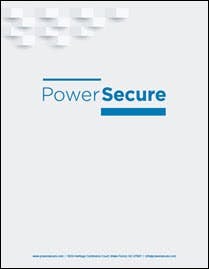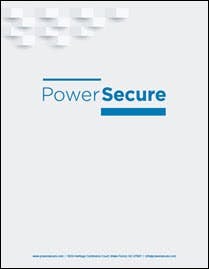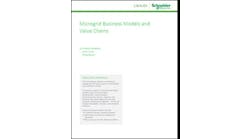There are many reasons why enterprises and organizations choose to install stationary engines at their facilities for on-site power. For example, they may use the generators for standby power, base-load power or built-in redundancy for critical assets.
Download the full report.
Stationary engines collectively have had an impact on air quality and public health. So the Environmental Protection Agency (EPA) has been regulating them for decades, a new white paper from PowerSecure points out.
And for stationary diesel engines, “progressively stricter EPA standards were released and finalized between 1996 and 2014,” the report states.
These EPA standards mandated diesel engines reduce their exhaust emissions to various tier levels.
The final regulation — EPA Tier 4 Final standards — is discussed in detail in the new report.
According to the report, a scalable EPA Tier 4 Final generator keeps capital requirements low, provides room for future growth, and ensures a reliable and easily maintainable system.
“Uncertified system risks are also far greater than those of a factory-certified generator set. If the packager did not properly set up the correct controller program before the equipment arrived on-site, for example, commissioning and EPA testing could be delayed for months.” — PowerSecure
“Expert local and remote system monitoring takes the worry out of ensuring a reliable power supply,” PowerSecure states. “In most cases, a factory-certified generator set removes the requirement for initial and ongoing emissions testing, placing the burden of compliance on the engine manufacturer.”
When exploring why organizations should consider a Tier 4 final engine as part of their on-site power solutions, PowerSecure points out the two following benefits:
- Tier 4 Final Engines can enable the broadest applications.
- They feature built-in redundancy. Because Tier 4 Final diesel engines and generators can run in parallel, the redundant nature of multiple power blocks helps the reliability of the system.
Further, a factory-certified, Tier 4 Final generator set already has an emissions control system that is designed specifically for that engine, and it is already factory tested and guaranteed to operate as promised while providing excellent emissions control.
The new report from PowerSecure covers the following topics in detail:
- Tier 4 Final Standards
- Why Consider a Tier 4 Final Engine as Part of Your On-Site Solution
- Implications For Your On-Site Solution Selection
- Tier 4 Final Factory Certification Is a Must Have
- System Scalability and Reliability Are Critical Considerations
- Monitoring and Run-Time Experience Makes All the Difference
Download the full report, “Maximizing the Value of On-Site Power Generation with EPA Tier 4 Final Stationary Engines,” courtesy of PowerSecure, to explore why having the correct Certified Tier 4 Final generator set not only meets EPA standards and avoids costly penalties, but also can be essential for growth and profitability.








